Thingiverse
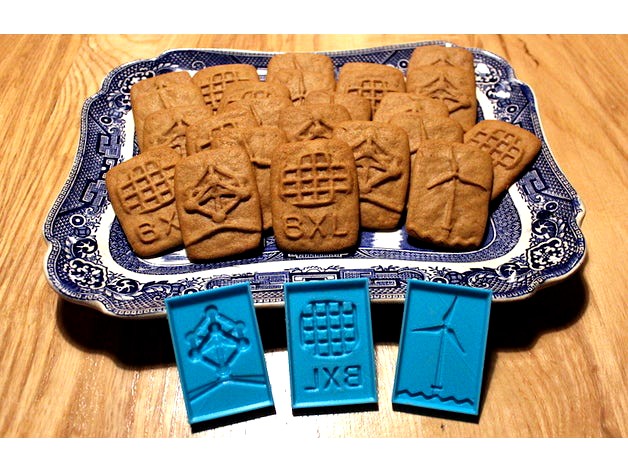
Belgian Speculoos Cookie Molds by makefast
by Thingiverse
Last crawled date: 3 years ago
Here's a fun set of speculoos cookie molds with modern designs inspired by Belgium.
Enjoy!
Safety first
Naturally, there are some important considerations when using printed parts around food. In short: use food-safe filaments and coat the parts with a food-safe sealant.
Also note that the molds themselves should never get hot; they’re just used to press a shape into the cool dough (read: never put the molds in the oven!).
What is speculoos?
Anyone who’s traveled by airplane sometime in the last decade has probably been offered a Biscoff with their hot beverage: a crisp, buttery spiced cookie that’s baked to a toasted-brown color and tastes delicious alone or dunked in coffee or tea.
But those in-flight snacks are just a commoditized version of the authentic artisan speculoos made in and around Belgium (Dutch “speculaas” and German “spekulatius” are quite similar, but use different sugar types and spice combinations). The genuine article is more intensely spiced and pressed by hand into wooden molds, often decorated with old-world designs.
Belgian Shapes
Having spent some time in Brussels, we grew fond of all the amazing food the city offers (craft waffles, chocolate, beer/gueuze, frites; need we say more?), as well as its gorgeous architecture, captivating museums, and unique, cartoon-laden art scene. So when it came time to decide what the molds should depict, we had no shortage of ideas.
In the end we settled on:
Atomium - This funky building is a beautiful piece of futuristic architecture built for the World’s Fair in 1958. It resembles the lattice structure of iron.
Gaufre de Liège - While technically hailing from another Belgian city, these waffles made with extra butter and pearl sugar can be found all around Brussels. We included the BXL (short for the French name of the city, Bruxelles) just to be clear.
Wind Turbine - The Dutch windmill is a common design used on traditional speculoos, so we took the liberty of modernizing it with a turbine (like those dotted around Belgium and off the coast).
Making and Baking
Using a gram scale, this speculoos recipe (in French or translated to English) claims to be derived from Maison Dandoy in Brussels and is simple to make in a single bowl with minimal dishes. For those using the English translation, note that the oven temp is in Celsius (160C = 320F).
Firmly press the dough into the molds on a countertop, then gently lift to reveal the design. You can use a rolling pin instead of just brute force if so inclined.
The dough’s consistency is very similar to playdough and doesn’t include eggs. This makes it very satisfying to work with, and safe for little ones to help out with the forming/baking/nibbling (especially fun around the holidays with family).
You can even freehand shapes (hearts, stars, animals, etc...but rolled or patted quite thin works best), and they turn out surprisingly well.
Slide your speculoos into the oven and watch them do their slow, enticing dance over 15-20 minutes. For a crispier, carmelly-er speculoos, opt for a longer bake.
Then pull them out to cool on the baking sheet for 5 min, and transfer to a wire cooling rack for a couple hours (that’s right, 2 hours; you’re letting them dry out and crisp up here... if you’re looking for softer “cookies,” just don’t let them air out as much).
For those too impatient to wait for the full cooling/crisping to test them out, you’ll be glad to know that they’re also edible (scrumptious, even) warm out of the oven.
Bonne dégustation !*
For the especially curious at heart and adventurous at kitchen, this is an excellent primer and recipe that will be of use if you’re looking to emulate one brand in particular.
*Om nom nom.
Technical Takeaways
After a few iterations, we learned some things about making functional speculoos molds. Here’s a cheat sheet to help you make your own custom shapes for working with pressed dough:
The base cookie height should be 2-4mm (3mm seems like a practical middle ground; too thick, and the rise of the main cookie deforms the features on top).
The feature height should be 0.5-2.5mm (any lower and the lines disappear; any higher and dough seems to get stuck in the crevices).
Make sure to apply a draft angle/taper on all features to facilitate demolding of the somewhat fragile dough (10 degrees minimum).
Minimum feature line thickness is about 1mm (the dough is slightly grainy and has trouble reliably working in details much finer than that), so we aimed for 2-3mm grooves to allow for tapering down to 1-1.5 at the peaks.
Lines are visually more pronounced than steps when baked, so design accordingly (i.e. think about it like drawing line art, not solid modeling shapes in CAD).
Print with a layer height of 0.25mm or less. Much more than that and the slight bulge on each layer will grab the dough, making it harder to demold. We used 0.2mm layer height in the end.
Use straight edges for the overall cookie shape. While less decorative, this makes trimming off the inevitable squished-out dough much easier than scalloped or fluted sides.
Enjoy!
Safety first
Naturally, there are some important considerations when using printed parts around food. In short: use food-safe filaments and coat the parts with a food-safe sealant.
Also note that the molds themselves should never get hot; they’re just used to press a shape into the cool dough (read: never put the molds in the oven!).
What is speculoos?
Anyone who’s traveled by airplane sometime in the last decade has probably been offered a Biscoff with their hot beverage: a crisp, buttery spiced cookie that’s baked to a toasted-brown color and tastes delicious alone or dunked in coffee or tea.
But those in-flight snacks are just a commoditized version of the authentic artisan speculoos made in and around Belgium (Dutch “speculaas” and German “spekulatius” are quite similar, but use different sugar types and spice combinations). The genuine article is more intensely spiced and pressed by hand into wooden molds, often decorated with old-world designs.
Belgian Shapes
Having spent some time in Brussels, we grew fond of all the amazing food the city offers (craft waffles, chocolate, beer/gueuze, frites; need we say more?), as well as its gorgeous architecture, captivating museums, and unique, cartoon-laden art scene. So when it came time to decide what the molds should depict, we had no shortage of ideas.
In the end we settled on:
Atomium - This funky building is a beautiful piece of futuristic architecture built for the World’s Fair in 1958. It resembles the lattice structure of iron.
Gaufre de Liège - While technically hailing from another Belgian city, these waffles made with extra butter and pearl sugar can be found all around Brussels. We included the BXL (short for the French name of the city, Bruxelles) just to be clear.
Wind Turbine - The Dutch windmill is a common design used on traditional speculoos, so we took the liberty of modernizing it with a turbine (like those dotted around Belgium and off the coast).
Making and Baking
Using a gram scale, this speculoos recipe (in French or translated to English) claims to be derived from Maison Dandoy in Brussels and is simple to make in a single bowl with minimal dishes. For those using the English translation, note that the oven temp is in Celsius (160C = 320F).
Firmly press the dough into the molds on a countertop, then gently lift to reveal the design. You can use a rolling pin instead of just brute force if so inclined.
The dough’s consistency is very similar to playdough and doesn’t include eggs. This makes it very satisfying to work with, and safe for little ones to help out with the forming/baking/nibbling (especially fun around the holidays with family).
You can even freehand shapes (hearts, stars, animals, etc...but rolled or patted quite thin works best), and they turn out surprisingly well.
Slide your speculoos into the oven and watch them do their slow, enticing dance over 15-20 minutes. For a crispier, carmelly-er speculoos, opt for a longer bake.
Then pull them out to cool on the baking sheet for 5 min, and transfer to a wire cooling rack for a couple hours (that’s right, 2 hours; you’re letting them dry out and crisp up here... if you’re looking for softer “cookies,” just don’t let them air out as much).
For those too impatient to wait for the full cooling/crisping to test them out, you’ll be glad to know that they’re also edible (scrumptious, even) warm out of the oven.
Bonne dégustation !*
For the especially curious at heart and adventurous at kitchen, this is an excellent primer and recipe that will be of use if you’re looking to emulate one brand in particular.
*Om nom nom.
Technical Takeaways
After a few iterations, we learned some things about making functional speculoos molds. Here’s a cheat sheet to help you make your own custom shapes for working with pressed dough:
The base cookie height should be 2-4mm (3mm seems like a practical middle ground; too thick, and the rise of the main cookie deforms the features on top).
The feature height should be 0.5-2.5mm (any lower and the lines disappear; any higher and dough seems to get stuck in the crevices).
Make sure to apply a draft angle/taper on all features to facilitate demolding of the somewhat fragile dough (10 degrees minimum).
Minimum feature line thickness is about 1mm (the dough is slightly grainy and has trouble reliably working in details much finer than that), so we aimed for 2-3mm grooves to allow for tapering down to 1-1.5 at the peaks.
Lines are visually more pronounced than steps when baked, so design accordingly (i.e. think about it like drawing line art, not solid modeling shapes in CAD).
Print with a layer height of 0.25mm or less. Much more than that and the slight bulge on each layer will grab the dough, making it harder to demold. We used 0.2mm layer height in the end.
Use straight edges for the overall cookie shape. While less decorative, this makes trimming off the inevitable squished-out dough much easier than scalloped or fluted sides.
Similar models
thingiverse
free

CyberMan - Cookie Cutter by dgwilson
...second... later you see the cut out shapes on the baking tray before going into the oven... and after ... out of the oven.
enjoy.
thingiverse
free

form to bake a spoon formed cookie by meierei
...h a spoon made out of cookie just use this form to bring your dough in the right shape before you shove it in the oven. :-) enjoy
thingiverse
free

form to bake a spoon formed cookie by meierei
...h a spoon made out of cookie just use this form to bring your dough in the right shape before you shove it in the oven. :-) enjoy
cg_trader
$3

Baby Cookie Cutter | 3D
...utter dough shape kitchen bake cookies speculoos baby announcment fun bakery biscuit baked good baked house dining kitchen dining
cg_trader
$3

Baby Boy Cookie Cutter | 3D
... cookie baking cutter dough shape kitchen bake cookies speculoos baby bakery baked biscuit baked good house dining kitchen dining
thingiverse
free

Cookie Cutter - Round by VA3TNE
...eat cookie
drink milk
lick off your milk moustache
put empty glass in dishwasher
put out cookies & milk for santa
go to sleep
cg_trader
$3

Train Cookie Cutter | 3D
...r dough shape kitchen bake cookies speculoos baby announcement bakery baked biscuit ginger good dining train house kitchen dining
cg_trader
$3

It is a Boy Cookie Cutter | 3D
...dough shape kitchen bake cookies speculoos baby cabbage announcement bakery baked biscuit ginger good house dining kitchen dining
cg_trader
$3

Pacifier Cookie Cutter | 3D
... dough shape kitchen bake cookies speculoos baby announcement bakery baked ginger good house dining pacifier dummy kitchen dining
cg_trader
$3

Baby Boy Cabbage Cookie Cutter | 3D
... dough shape kitchen bake cookies speculoos baby cabbage announcement baked biscuit ginger baked good house dining kitchen dining
Makefast
thingiverse
free

Maraca with paused addition of sand by makefast
...3d printer's bed can help to reduce shrinkage.
minimize the time you pause the print to retain strong bonding between layers.
thingiverse
free

Can Chiller with paused addition of water by makefast
...ter or yourself if you pour liquid onto hot or electrified components!
more info at http://makefastworkshop.com/hacks/?p=20160920
thingiverse
free

Minimal Metric Washers (for M3 and M4 hardware) by makefast
...t a time and stocking your hardware bins so they're around when you need them (for example, when building the tunefast harp).
thingiverse
free

Finger Tracers - Preschool / Kindergarten Numbers for Learning by makefast
...sh to remix/edit to include other shapes, letters, symbols, etc. and is released as public domain (i.e. use it however you like).
thingiverse
free

Ball Bearing with paused addition of BBs by makefast
... the extruder is hot and can easily hurt yourself or your printer if you get something in the wrong place while it's running.
thingiverse
free

TuneFast Harp by makefast
.... for example a g major chord (g-b-d) can be played in the 1st inversion (b-d-g) or 2nd inversion (d-g-b) to fit within the harp.
thingiverse
free

LRTee: Last Resort 22mm Ventilator Tubing Splitter by makefast
... and flow restriction devices for multiple patient lung ventilation
ventilator circuit splitters - reinforced & thicker walls
thingiverse
free

Melusina Sculpture - 3D Scan of the Luxembourg Legend by makefast
...l 1883 text about melusina.
please support luxembourg's artists by visiting next time you're in the area. villmols merci!
thingiverse
free

Tunefast Harp with cone by disoculated
...a more elaborate (perhaps too much so) version of makefast#39;s tunefast harp. key features of this remix: reinforcement struts...
Speculoos
turbosquid
$19

Speculoos Spread
...d
royalty free 3d model speculoos spread for download as max on turbosquid: 3d models for games, architecture, videos. (1535687)
renderosity
$8

PROTOTYPE-X - SciFi High-Heels 2 - for G8F
.../> prototype-x (scifi high-heels2) for g8f is dedicated to speculoos in thanks for supporting my work actively since my...
cg_trader
$9

POLYPASTA - Speculoos Cookie 01
...an fill up your closeups with a natural coffee set for moody reading areas or table.
it is part of our christmas collection 2021.
cg_trader
$3

Baby Cookie Cutter | 3D
...food cookie baking cutter dough shape kitchen bake cookies speculoos baby announcment fun bakery biscuit baked good baked house...
cg_trader
$3

Train Cookie Cutter | 3D
...food cookie baking cutter dough shape kitchen bake cookies speculoos baby announcement bakery baked biscuit ginger good dining train...
cg_trader
$3

It is A Girl | 3D
...food cookie baking cutter dough shape kitchen bake cookies speculoos baby announcement bakery baked biscuit ginger good dining girl...
cg_trader
$3

It is a Boy Cookie Cutter | 3D
...food cookie baking cutter dough shape kitchen bake cookies speculoos baby cabbage announcement bakery baked biscuit ginger good house...
cg_trader
$3

Pacifier Cookie Cutter | 3D
...food cookie baking cutter dough shape kitchen bake cookies speculoos baby announcement bakery baked ginger good house dining pacifier...
cg_trader
$3

Baby Boy Cookie Cutter | 3D
...food cookie baking cutter dough shape kitchen bake cookies speculoos baby bakery baked biscuit baked good house dining kitchen...
Belgian
turbosquid
$27

BELGIAN SOFA
...id
royalty free 3d model belgian for download as max and obj on turbosquid: 3d models for games, architecture, videos. (1328909)
design_connected
$16
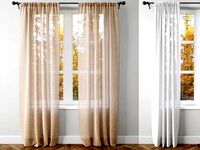
Belgian Linen Curtains
...belgian linen curtains
designconnected
belgian linen curtains computer generated 3d model.
turbosquid
$20

Belgian Malinois
... available on turbo squid, the world's leading provider of digital 3d models for visualization, films, television, and games.
turbosquid
$15

belgian 3
... available on turbo squid, the world's leading provider of digital 3d models for visualization, films, television, and games.
turbosquid
$15

belgian 1
... available on turbo squid, the world's leading provider of digital 3d models for visualization, films, television, and games.
turbosquid
$15

belgian 2
... available on turbo squid, the world's leading provider of digital 3d models for visualization, films, television, and games.
3ddd
$1

Belgian Industrial Iron Spiked
...belgian industrial iron spiked
3ddd
belgian industrial iron spike
design_connected
$18

Sheer Belgian Linen Curtains
...sheer belgian linen curtains
designconnected
sheer belgian linen curtains computer generated 3d model.
design_connected
$16
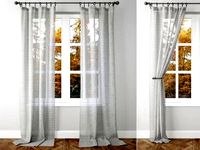
Belgian Linen Curtains 2
...belgian linen curtains 2
designconnected
belgian linen curtains 2 computer generated 3d model.
design_connected
$16
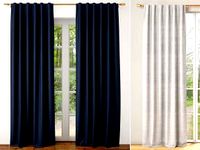
Belgian Flax Linen Curtain
...belgian flax linen curtain
designconnected
belgian flax linen curtain computer generated 3d model.
Cookie
archibase_planet
free
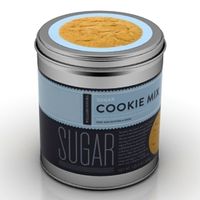
Cookie
...cookie
archibase planet
cookie cookie tin cookie jar pastry
cookie 1 - 3d model (*.gsm+*.3ds) for interior 3d visualization.
archibase_planet
free

Cookie
...cookie
archibase planet
cookie cookie tin pastry cookie jar
cookie 2 - 3d model (*.gsm+*.3ds) for interior 3d visualization.
3d_ocean
$5

Cookies
...cookies
3docean
cookie cookies decor food plate
cookies in plate. 3dmax 2014 + fbx + obj (v-ray)
archibase_planet
free

Cookies
...cookies
archibase planet
cookie cookie jar pastry
cookies - 3d model (*.gsm+*.3ds) for interior 3d visualization.
archibase_planet
free

Cookie
...cookie
archibase planet
cookie biscuit pastry
cookie - 3d model for interior 3d visualization.
archibase_planet
free
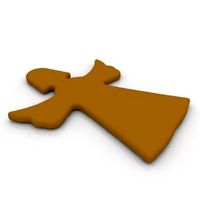
Cookie
...cookie
archibase planet
?astry cookie biscuit
cookie 1 - 3d model for interior 3d visualization.
archibase_planet
free
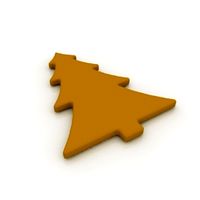
Cookie
...cookie
archibase planet
cookie pastry biscuit
cookie 2 - 3d model for interior 3d visualization.
archibase_planet
free

Cookie
...cookie
archibase planet
pastry cookie biscuit
cookie 3 - 3d model for interior 3d visualization.
archibase_planet
free

Cookie
...cookie
archibase planet
pastry cookie biscuit
cookie 4 - 3d model for interior 3d visualization.
archibase_planet
free
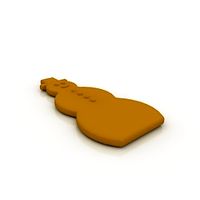
Cookie
...cookie
archibase planet
pastry cookie biscuit
cookie 5 n270707 - 3d model for interior 3d visualization.
Molds
3ddd
$1

molding
...molding
3ddd
молдинг
molding
3ddd
$1
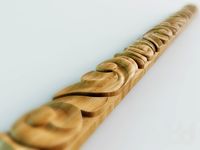
molding
...molding
3ddd
молдинг , резьба
molding
3d_export
$10
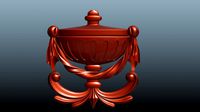
molding
...molding
3dexport
molding, casting, baguette, decoration
3d_export
$10

molding
...molding
3dexport
molding, casting, baguette, decoration
3d_export
$10

molding
...molding
3dexport
molding, casting, baguette, decoration
3d_export
$10

molding
...molding
3dexport
molding, casting, baguette, decoration
3d_export
$10

molding
...molding
3dexport
molding, casting, baguette, decoration
3d_export
$10

molding
...molding
3dexport
molding, casting, baguette, decoration
3d_export
$10

molding
...molding
3dexport
molding, casting, baguette, decoration
design_connected
$16

Mold
...mold
designconnected
eternit mold computer generated 3d model. designed by charlot, michel.
